2023 / LANDSCAPE: A window on nature, LOUVRE-LENS
Exhibition from March 29 to July 24, 2023
From the Renaissance to the present day, through painting, artists replay in their own way the myths of Creation, representing sky, earth, sea, light and darkness. In a sensitive journey, Landscape: Window on Nature tells us about this production and invites us to follow the “landscape artist” in the stages of his work, from the preparatory sketch to the finished work. Come and dive into the backstage of this creation. Imagined by the artist Laurent Pernot, an innovative scenography, populated with sounds, images and lights, immerses you in a sensory crossing of the landscape. With more than 170 masterpieces – François Boucher, Canaletto, John Constable, Camille Corot, Frederic Edwin Church, Eugène Delacroix, Catherine Empis, Anne-Charlotte Finel, Jean-Honoré Fragonard, Théodore Géricault, Katsushika Hokusai, Utagawa Hiroshige, Vassily Kandinsky, John Martin, Jean-François Millet, Joan Mitchell, Claude Monet, Georgia O’Keeffe, Frans Post, Nicolas Poussin,Théodore Rousseau, George Sand, Louise Joséphine Sarazin de Belmont, Nicolas de Staël, etc. – and two cinema spaces, this new exhibition explores in a new way our relationship with nature and questions our consciousness through the strength of the link that unites artists and landscape.
Curator:
Marie Lavandier, director of the Louvre-Lens
Vincent Pomarède, General Curator of Heritage at the Louvre Museum
Marie Gord, in charge of research and documentation at the Louvre-Lens
Artistic direction is by the artist Laurent Pernot
Sensitive and immersive, the scenography has been entrusted to Laurent Pernot and to the Louvre-Lens’s architect-scenographer, Mathis Boucher.
Four works by Laurent Pernot are also on view: Mountains, video, 2009; Contemplations – Water Lilies, painting on wood and marble, 2022; Contemplations – A Rainbow, painting on wood and marble, 2022; Contemplations – Pompeii, painting on wood and marble, 2022.
The spatial organization of the gallery has been imagined as an open landscape, a park or a garden, which unfolds across the entire width and into the heights. The play of perspectives alternates with more intimate islands. Several paths can be taken, conducive to wandering or getting lost, leaving room for the visitor’s intuition. The scenography is also thought as the crossing of a day or the ages of the earth. The bright colors of the partitions contribute to this, with striking evolutions and breaks from the darkness of early morning, the zenith of the sun to the shadows of dusk. Moreover, in the perspective of being inspired by the components of atmosphere in nature, there is an essential dimension that I wished to invoke and experiment with throughout the course: light in motion.
Cinema occupies two key spaces in the exhibition, with a selection of film extracts chosen by Laurent Pernot.
The tour opens with an immersive space, offering the visitor dreamy or contemplative landscapes, of a temporality that seems to be that of a nature marked by the absence of human imprint: Koyaanisqatsi, Godfrey Reggio (1982); Planet Z, Momoko Seto (2011); The Piano Lesson, Jane Campion (1993); Partie de campagne, Jean Renoir (1946); Sans Soleil, Chris Marker (1983); Mogari Forest, Naomi Kawase (2007); The Sunken Worlds, Nina Wolmark (1985); Longing for Light, Patricio Guzmán (2010); The Beaches of Agnès, Agnès Varda (2008); Where is the Jungle? Iván Castiñeiras Gallego (2015); Mountains, Laurent Pernot (2009).
The second projection space, in counterpoint to the first, resonates with contemporary concerns. It projects the visitor into a temporality where the present and the anticipation of the future are mixed, questioning the future of landscapes reshaped by human beings: Apocalypse Now, Francis Ford Coppola (1979); The Outraged Earth, Michale Boganim (2012); Echo chambers, Guillermo Moncayo (2014); Podesta Island, Stephanie Roland (2020); Stalker, Andrei Tarkovsky (1979); Black Waves, Ismaël Joffroy-Chandoutis (2017); The Diving Bell and the Butterfly, Julian Schnabel (2007); The Journey, Fernando Solanas (1992); Green Sun, Richard Fleischer (1973); Legend of the Forest, Osamu Tezuka (1987); The Red Turtle, Michael Dudok de Wit (2016); The Land Where Green Ants Dream, Werner Herzog (1984).
Another medium has its importance in promoting an immersive experience, in terms of perception and narrative power: sound. It has the quality of awakening our attention, of suspending our relationship to time and of amplifying our awareness of the present. Thus, sound sequences varying in intensity from one place to another punctuate the course and guide the visitor, upsetting his perception of space. Sound has this prodigious capacity, comparable to light, to arouse, catalyze or transmit a wide spectrum of emotions.
Laurent Pernot has chosen to disseminate music and natural soundscapes, punctual or more encompassing, which follow and blend throughout the course of the exhibition: Philip GLASS, The Grid, 1983; M83, Midnight Souls Still Remain, 2008; Erland COOPER, Music for Growing Flowers Pt.1, 2022; Franz SCHUBERT, performed by Alfred BRENDEL, Piano Sonata No.21 in B-flat Major D.960 Andante sostenuto, 1997; Philip GLASS, performed by Vanessa WAGNER, Étude 2, 2022; Henry PURCELL, conducted by John Eliot GARDINER, performed by Michael CHANCE, Here the deities approve, 1993; Michael NYMAN, performed by The Michael Nyman Band, Memorial, 1989; Melaine DALIBERT, performed by Vanessa WAGNER, Epilogue, 2022
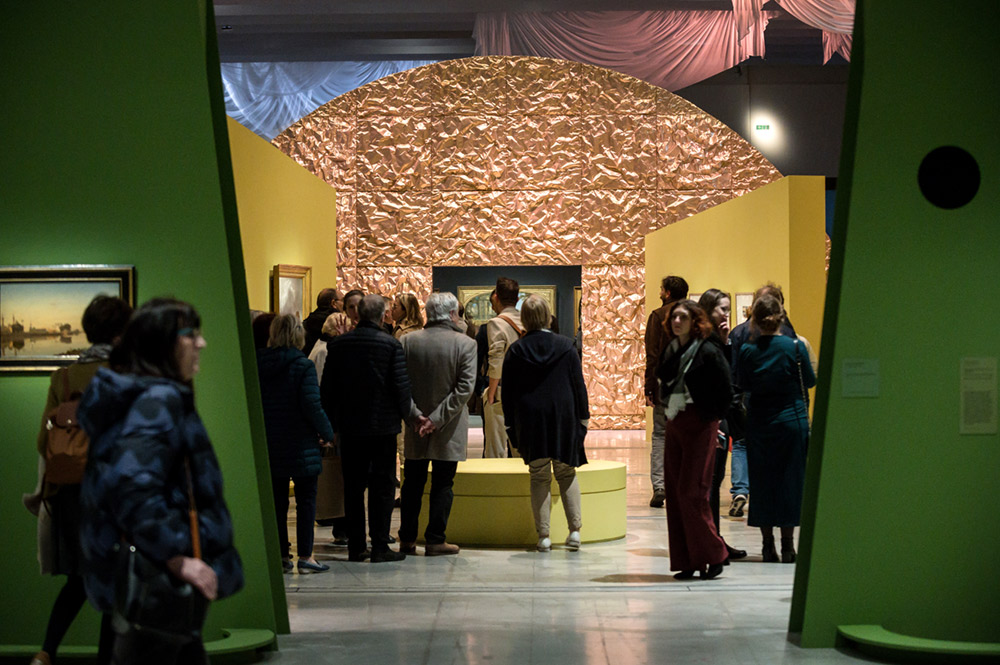
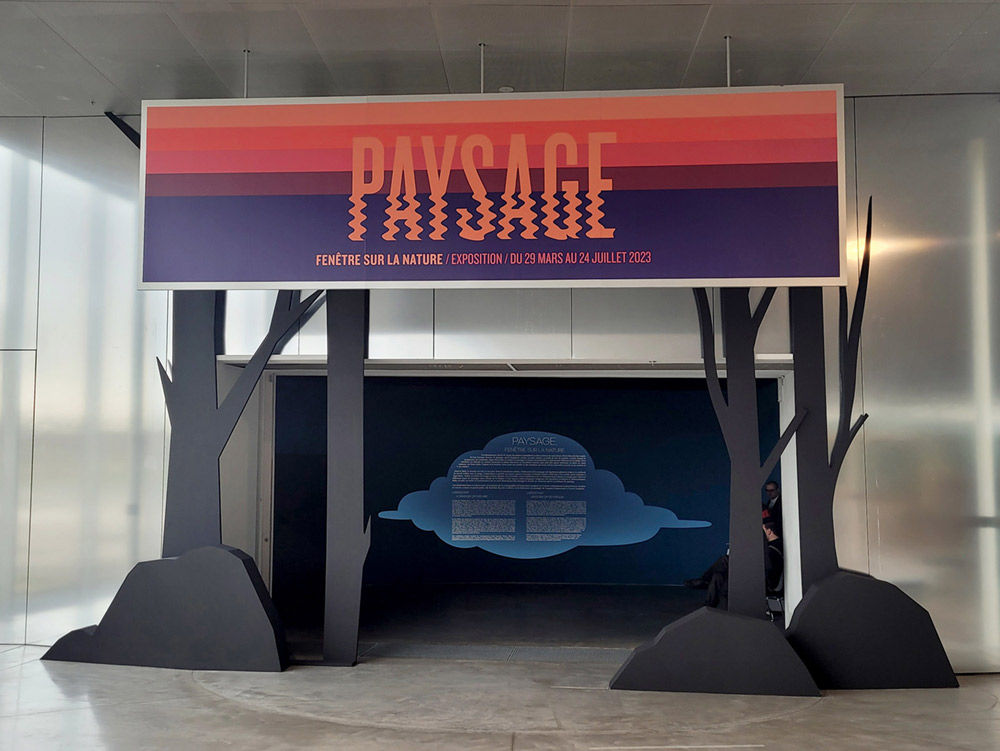
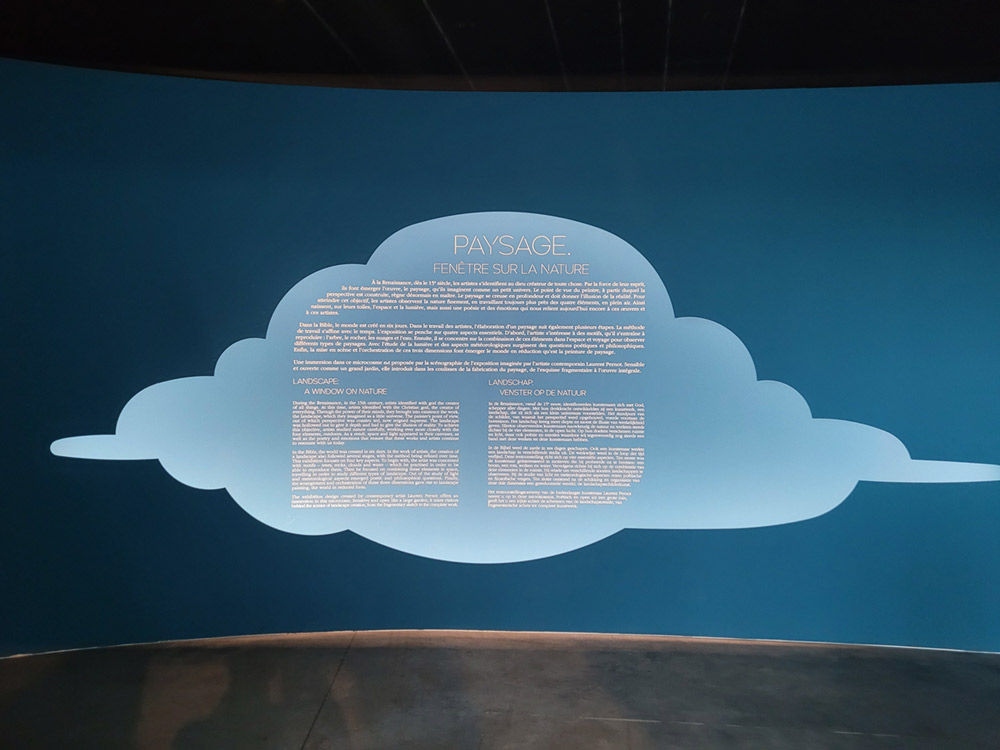
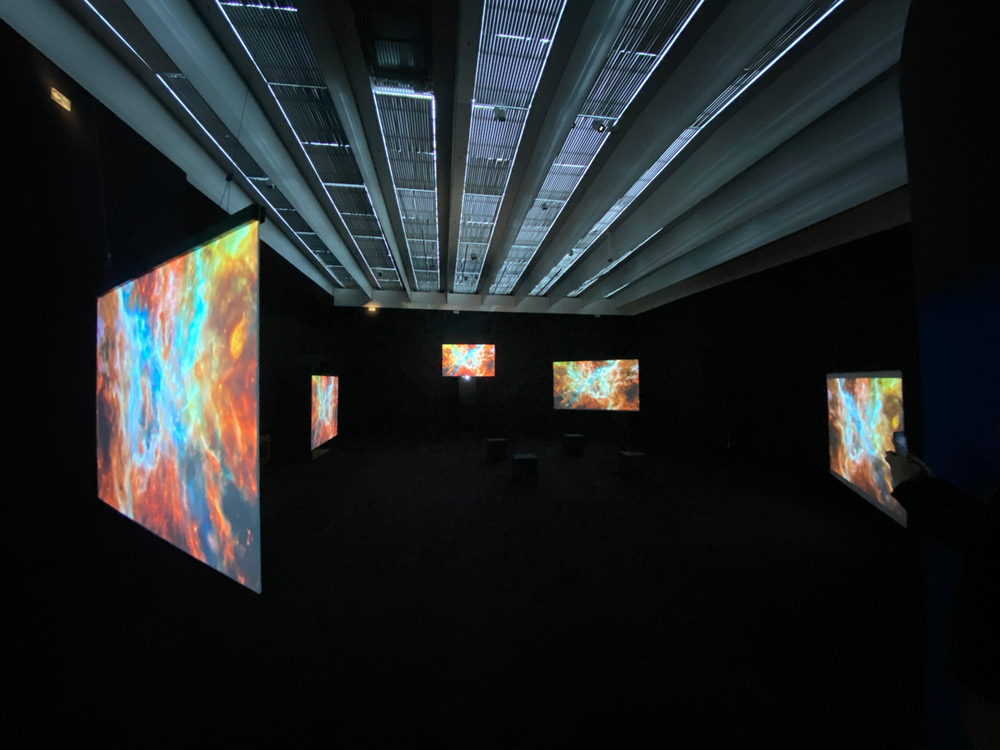
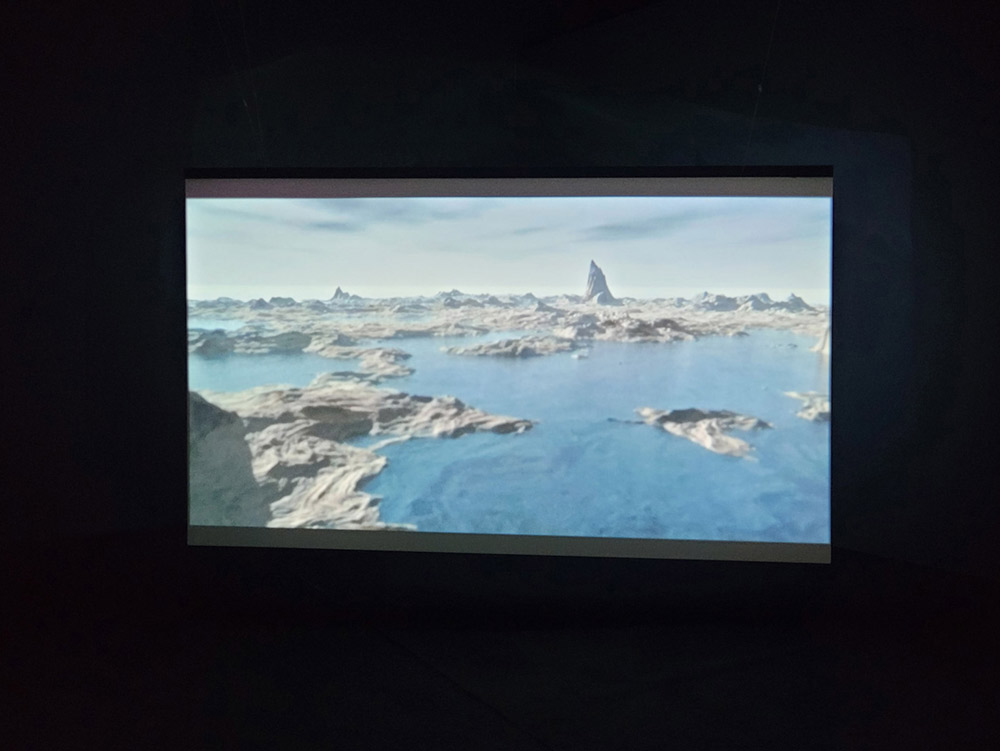
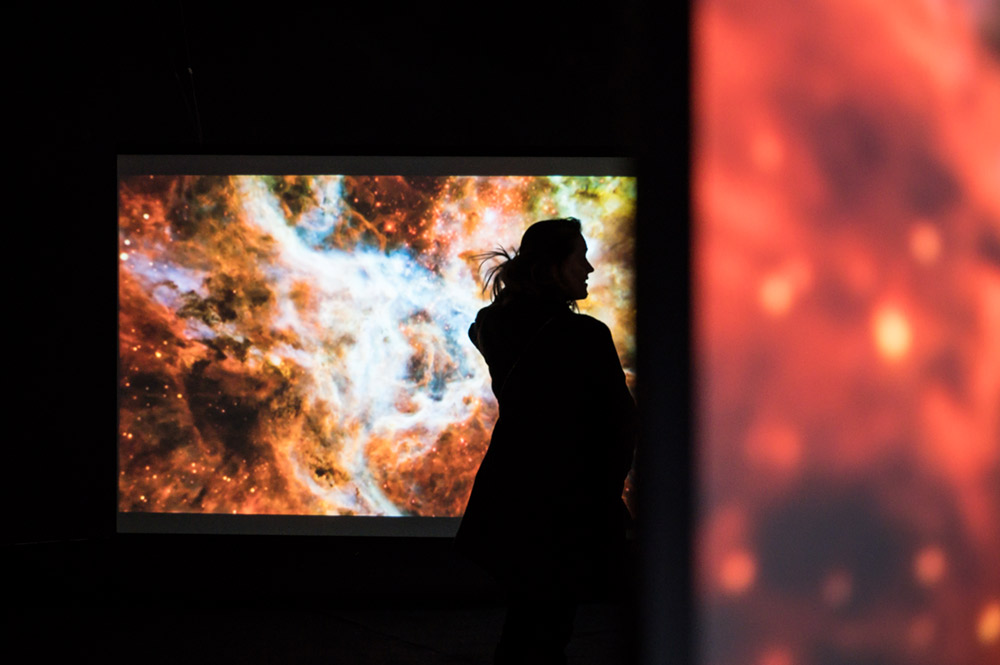
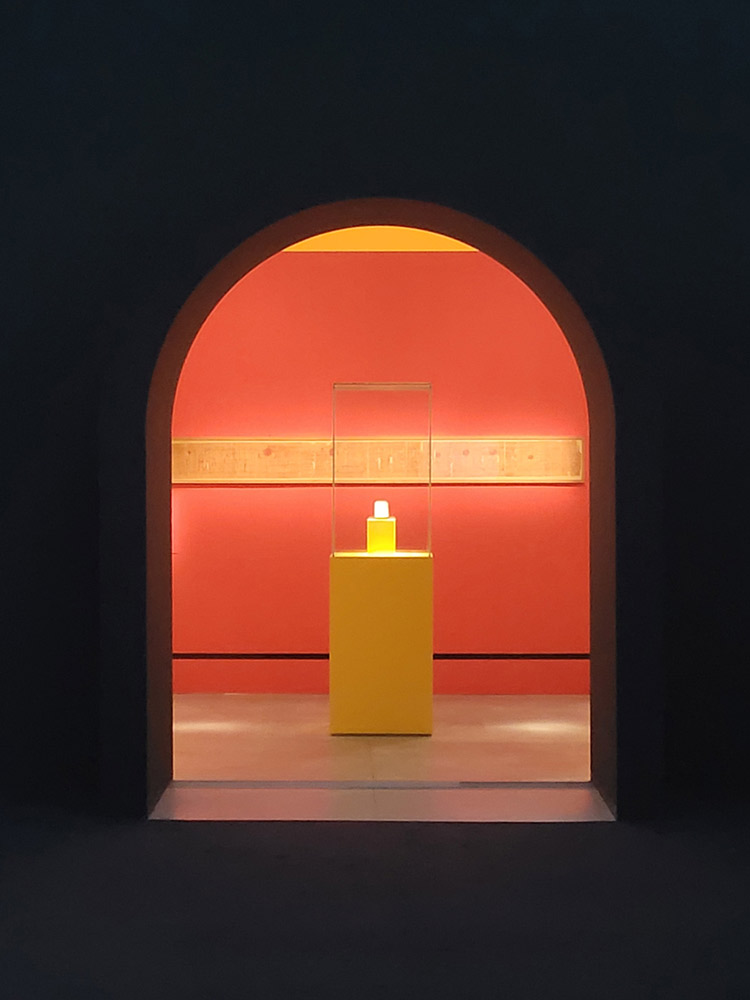
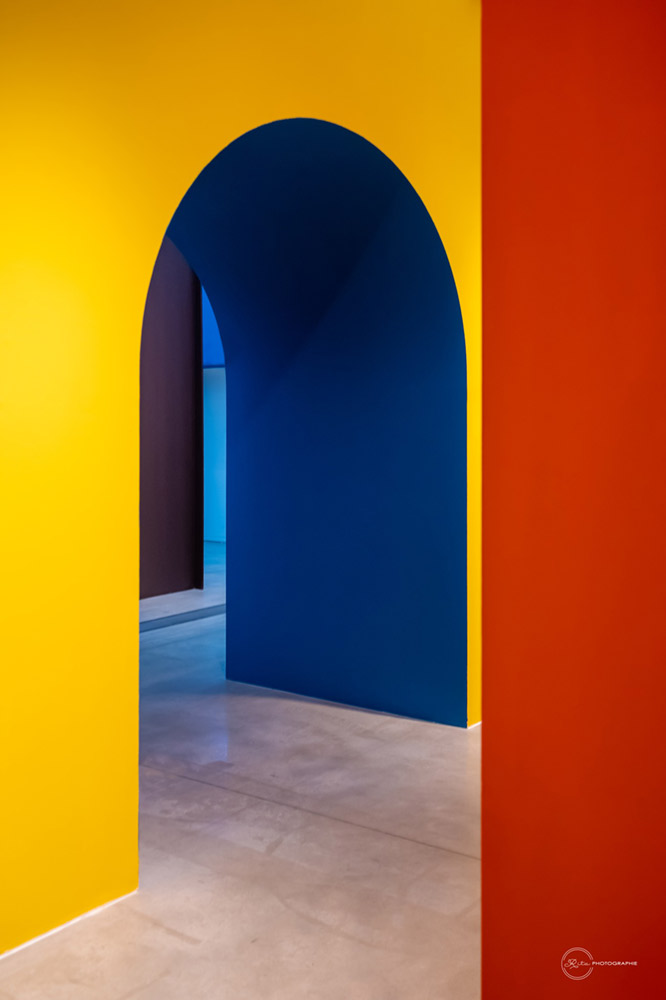
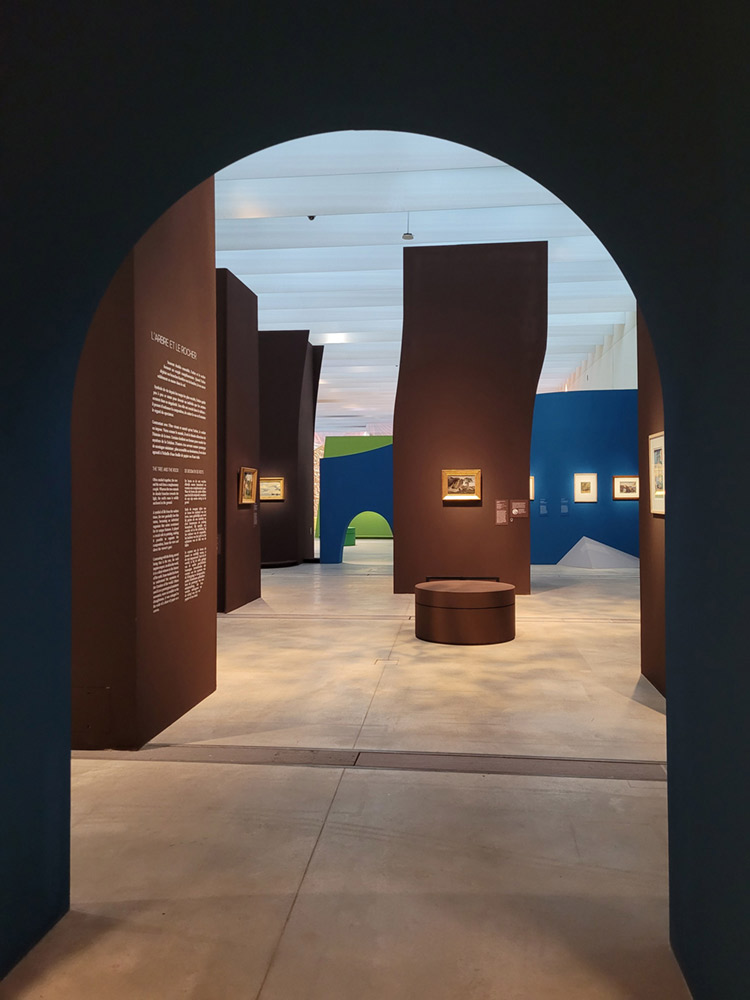
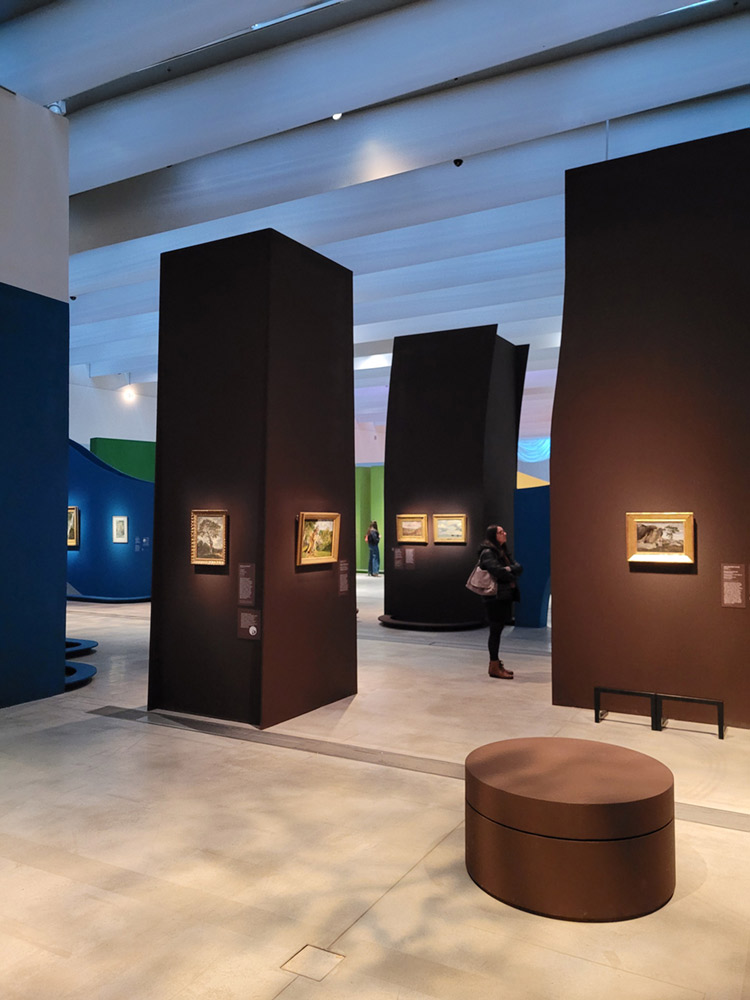
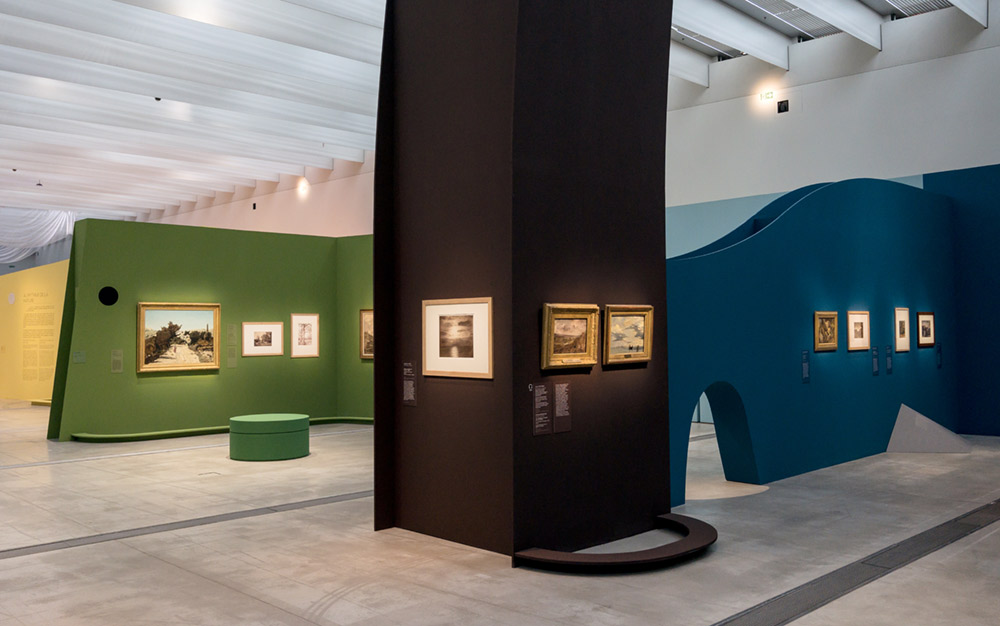
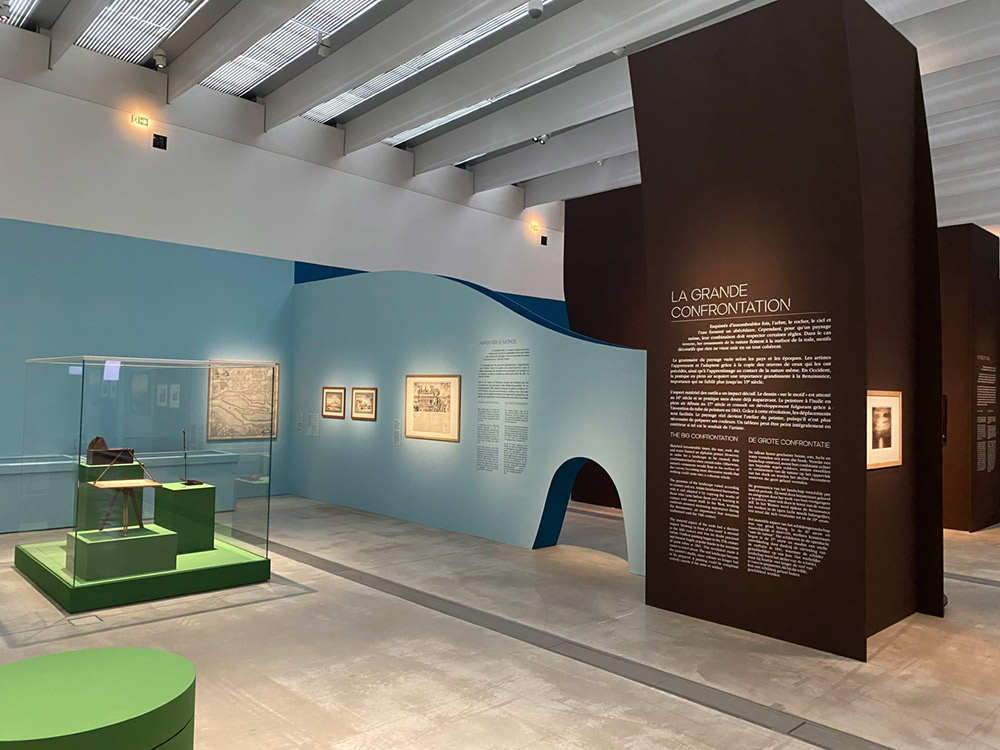
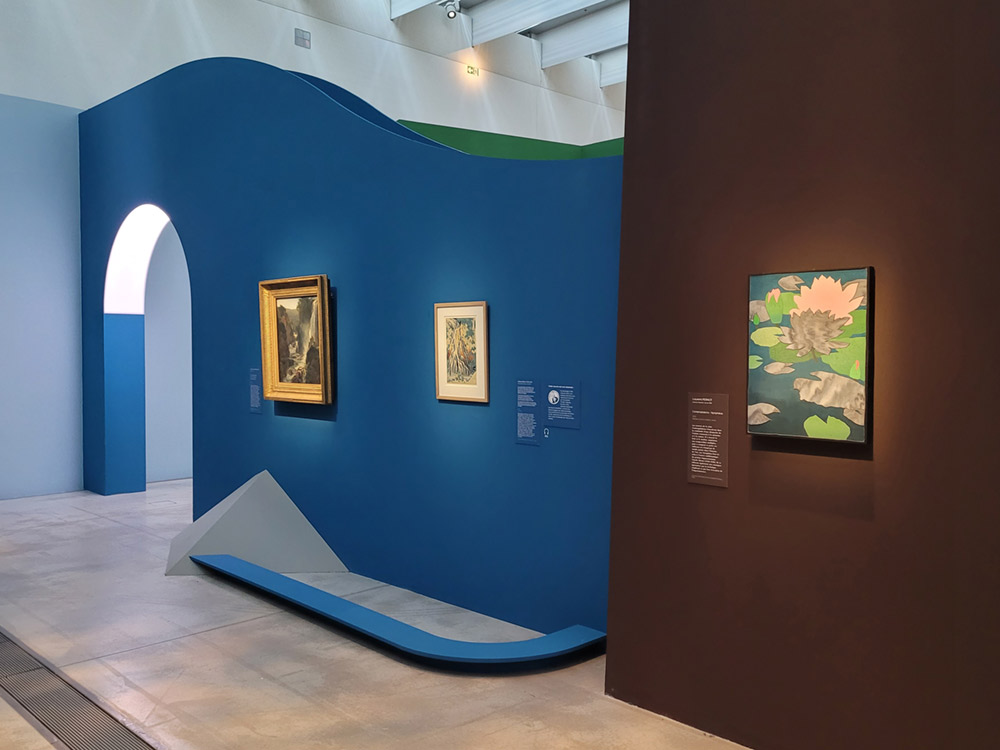
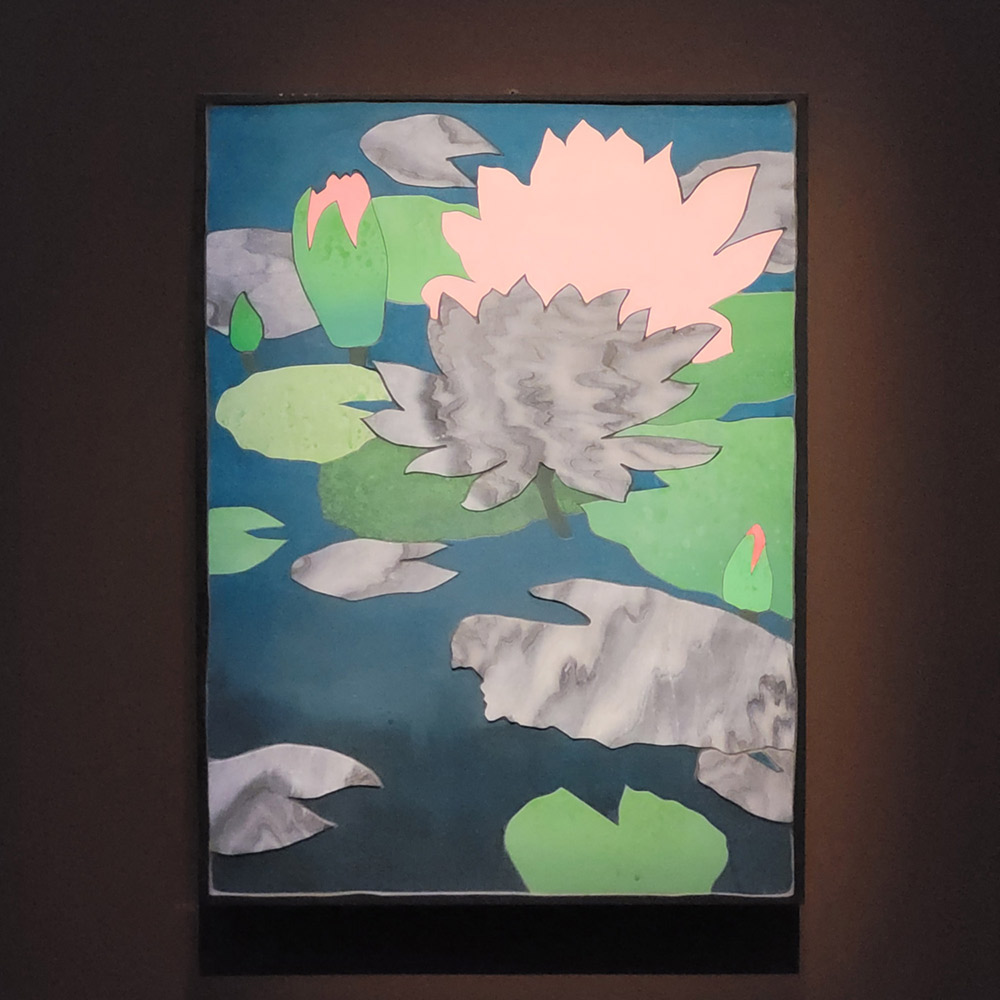
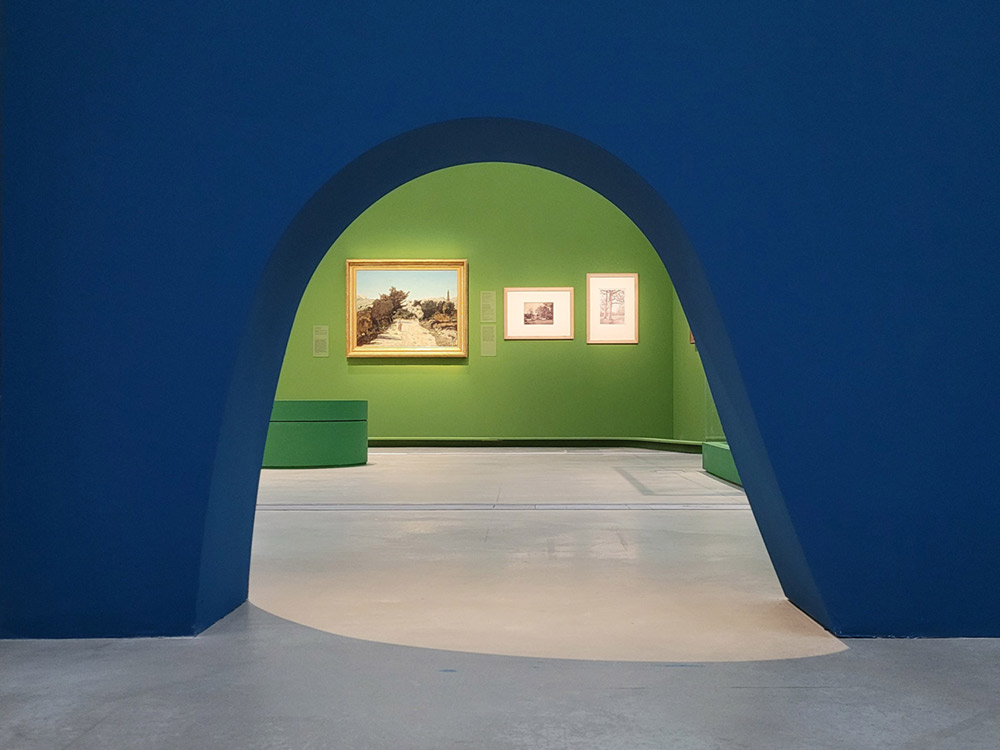
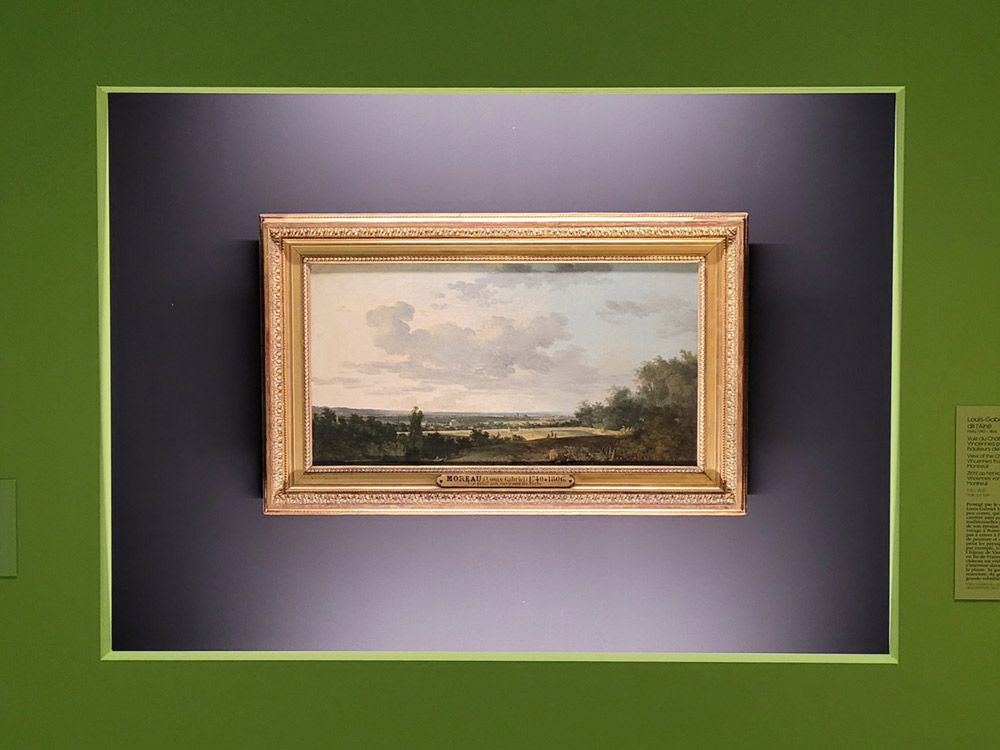
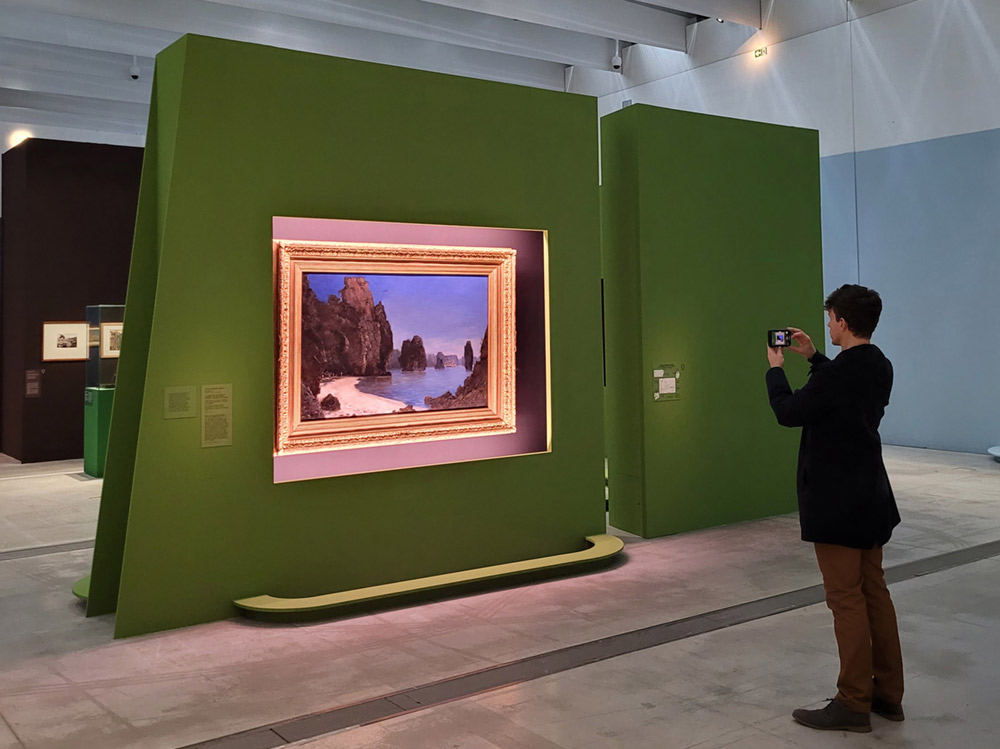
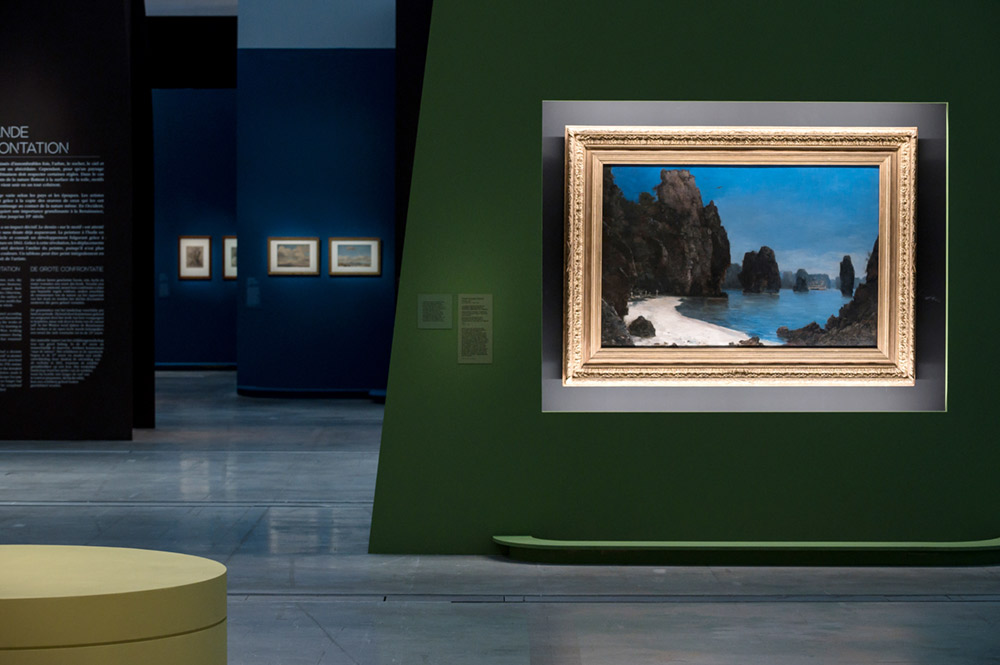
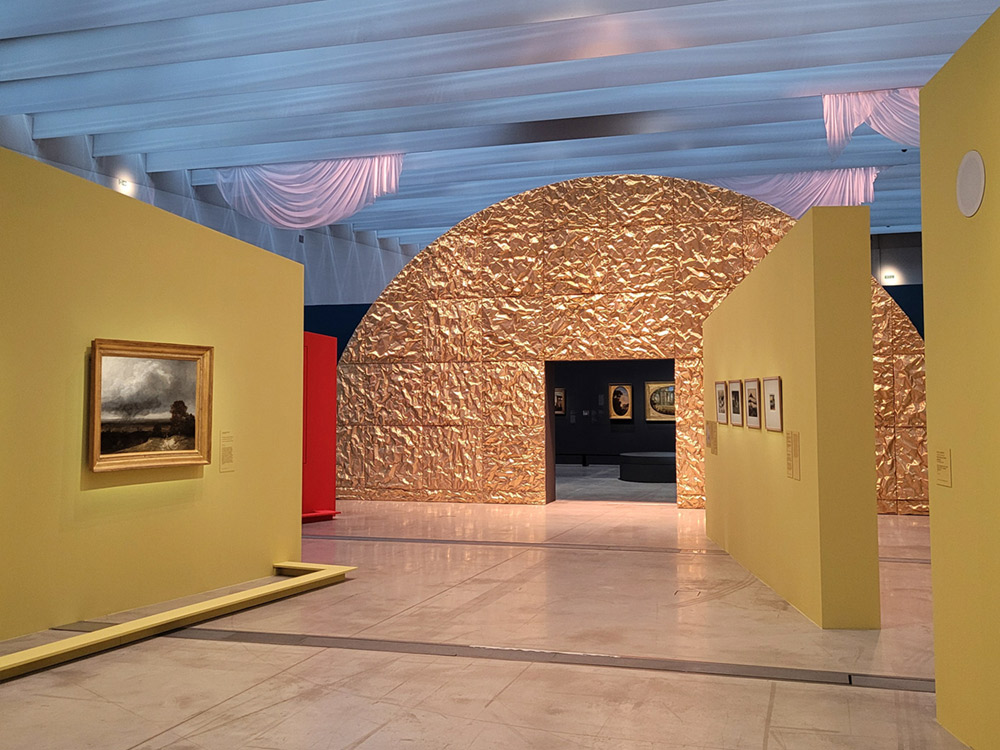
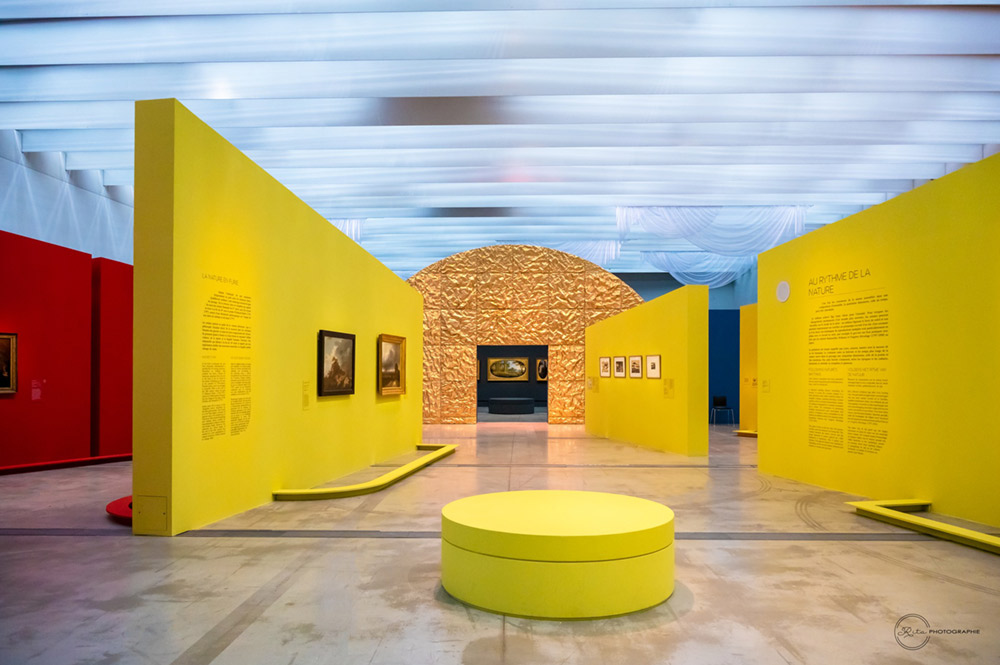
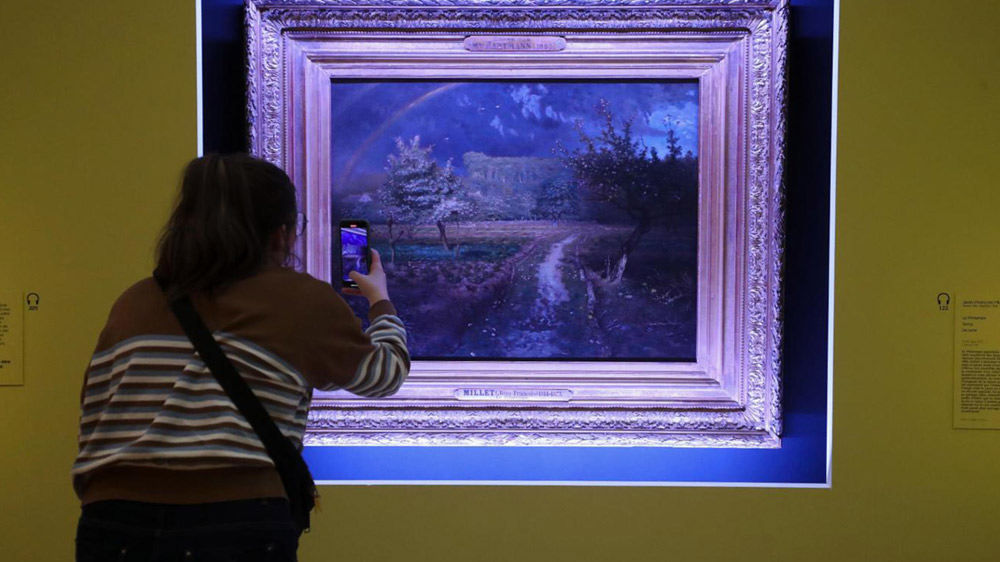
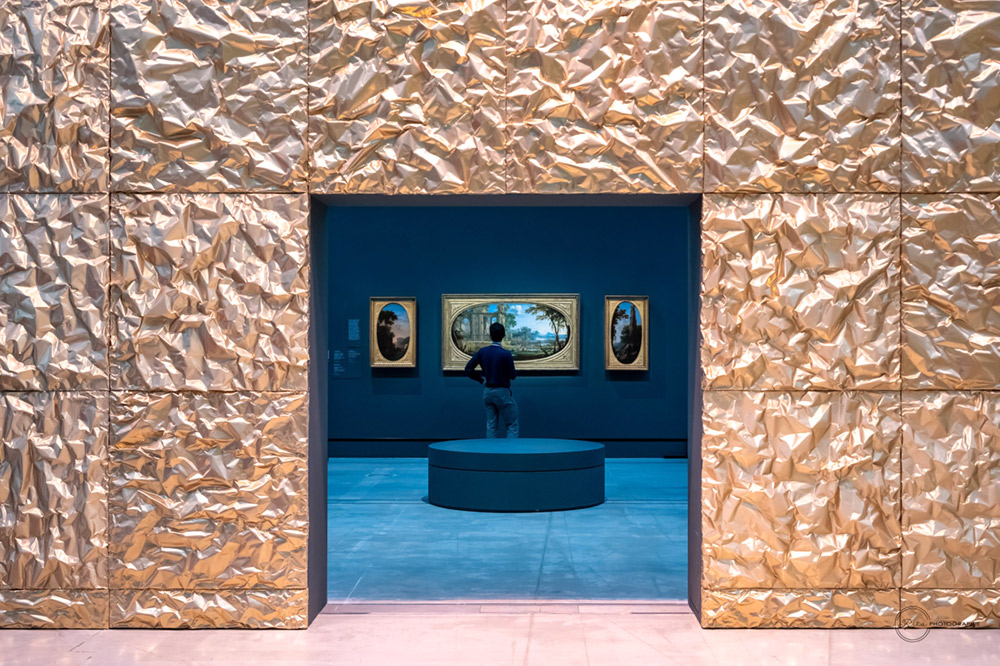
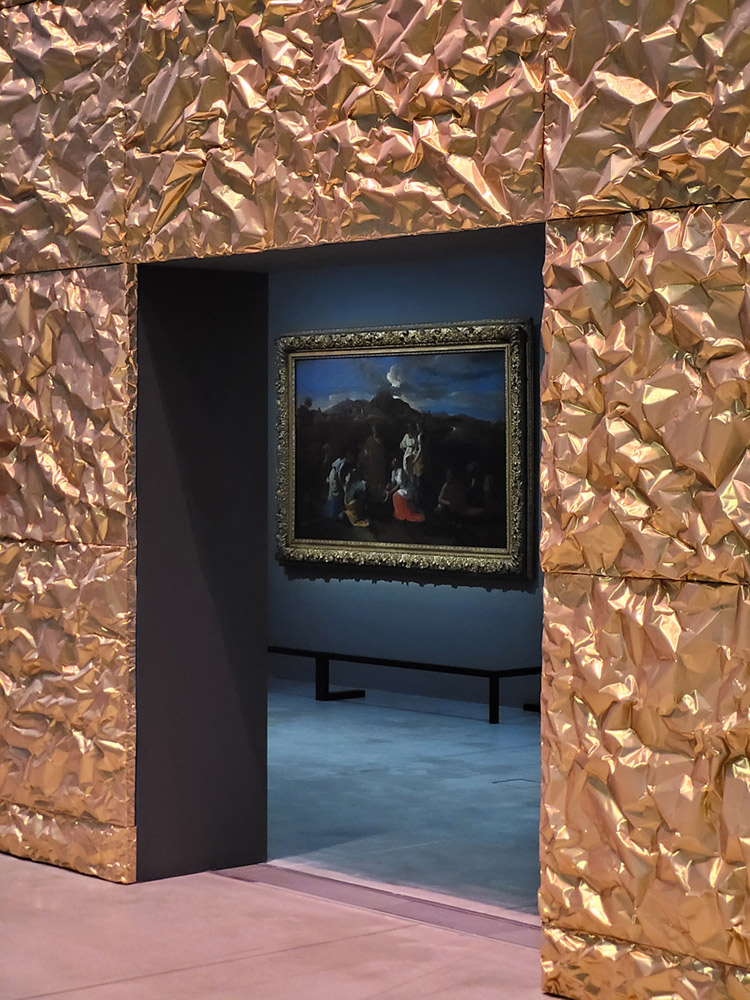
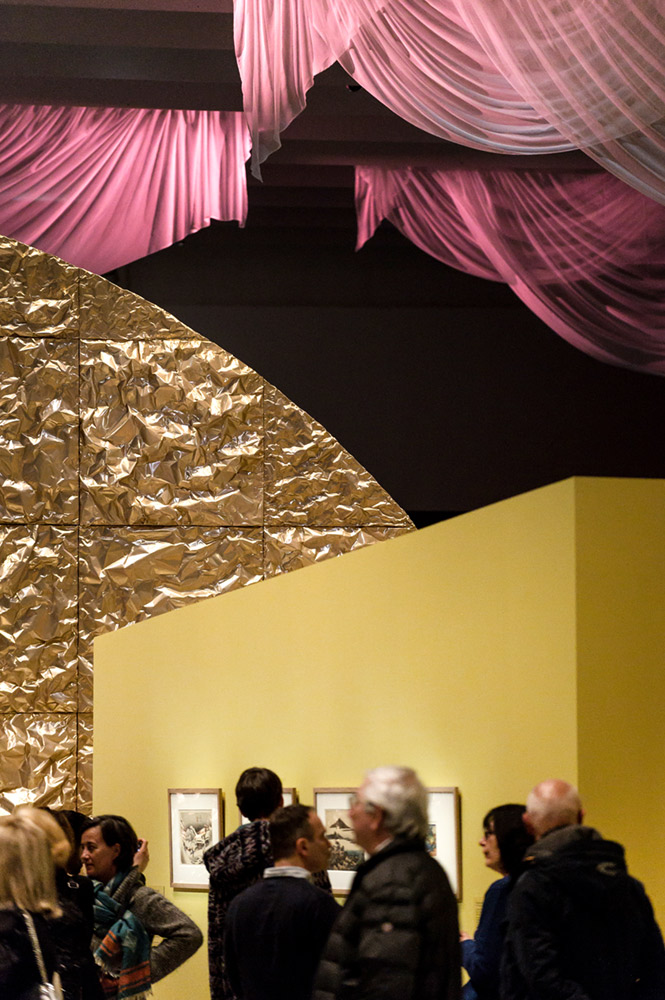
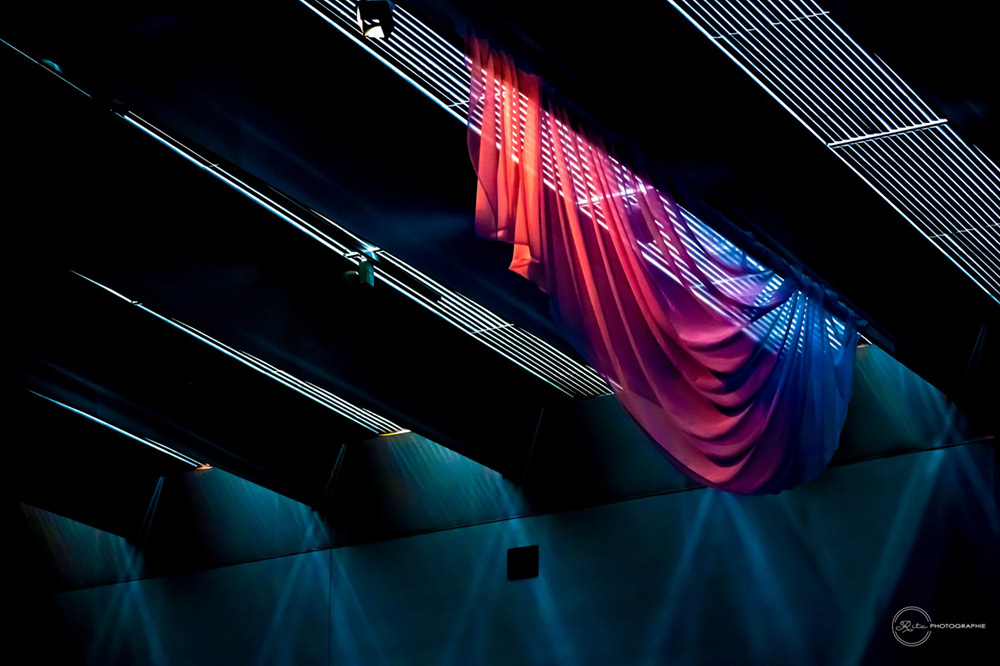
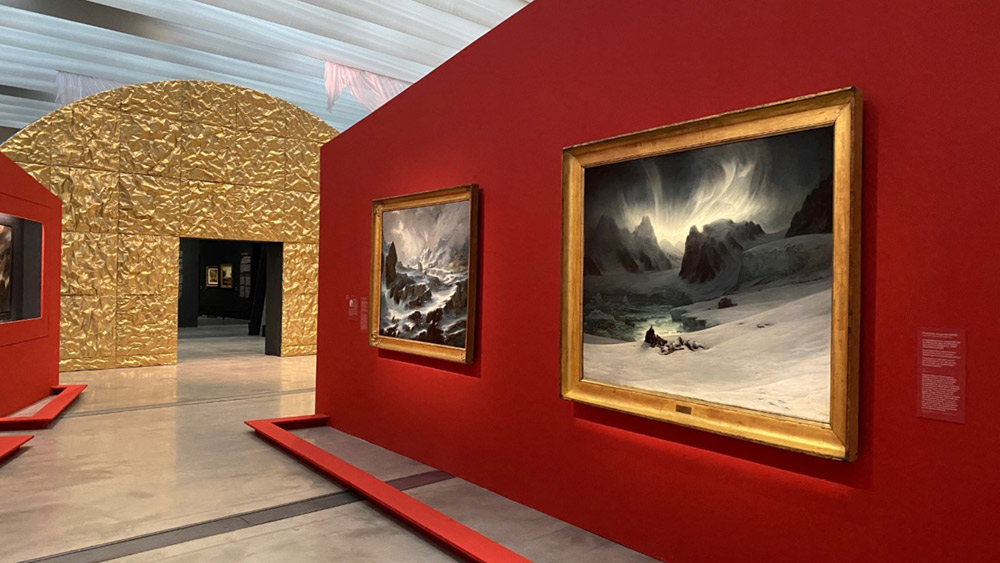
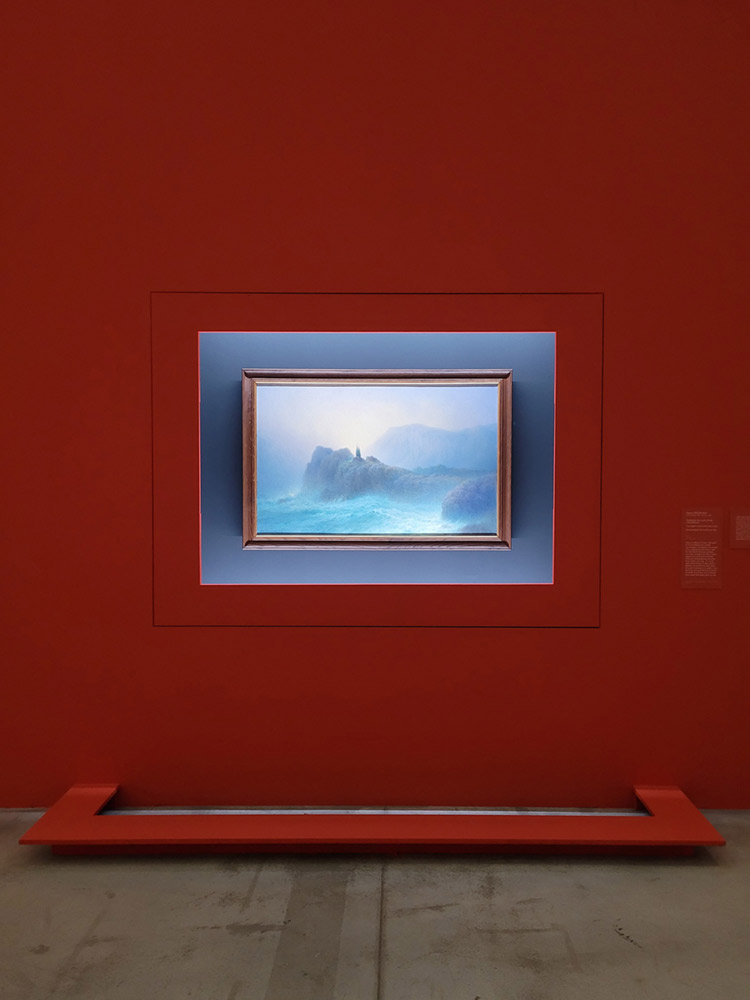
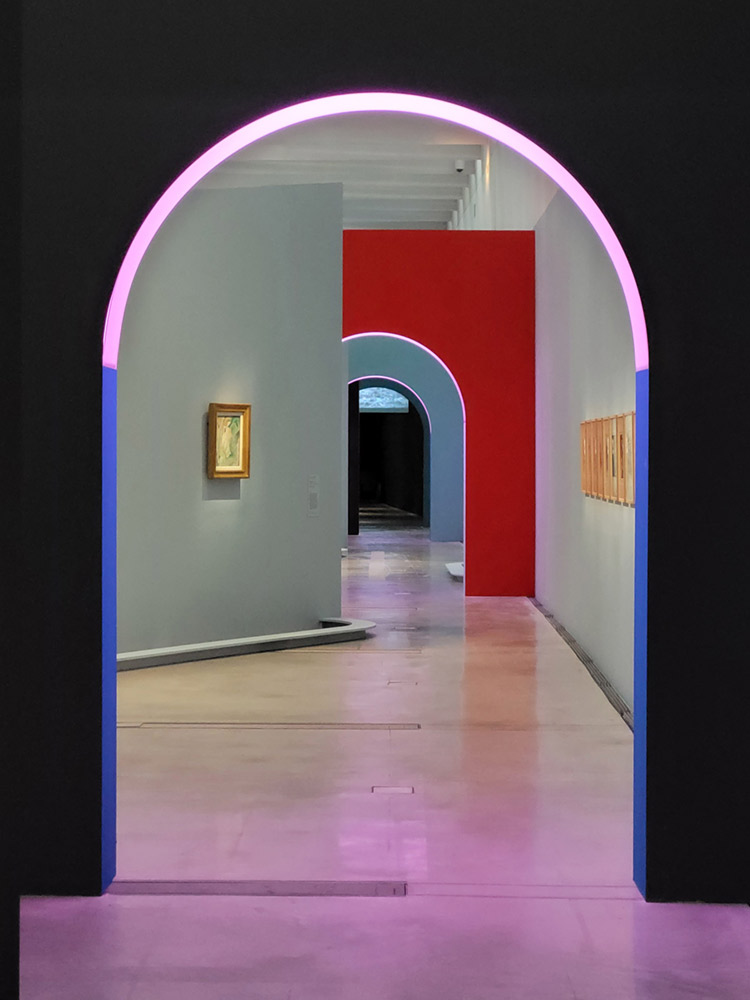
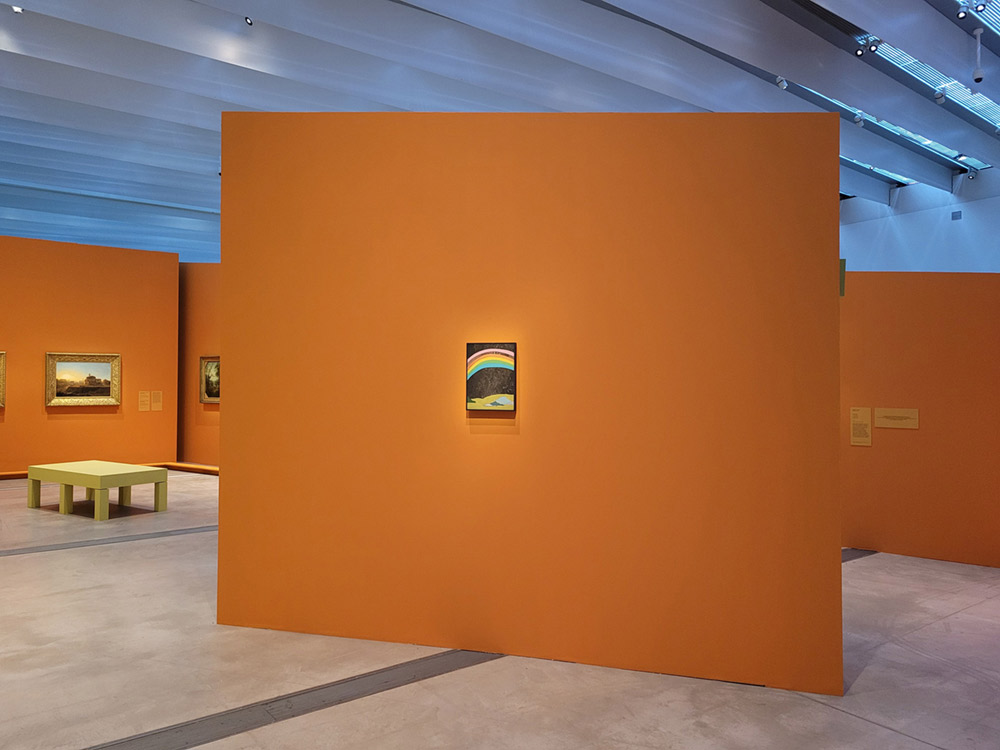
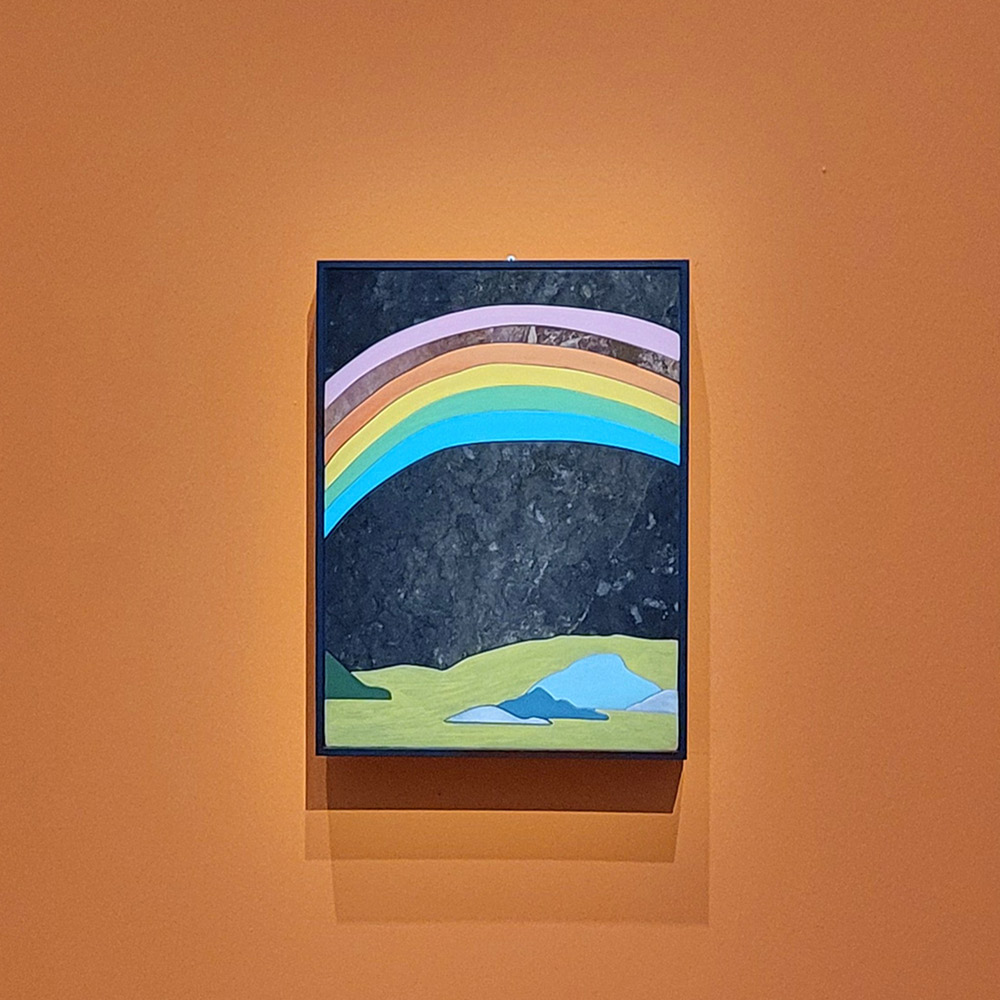
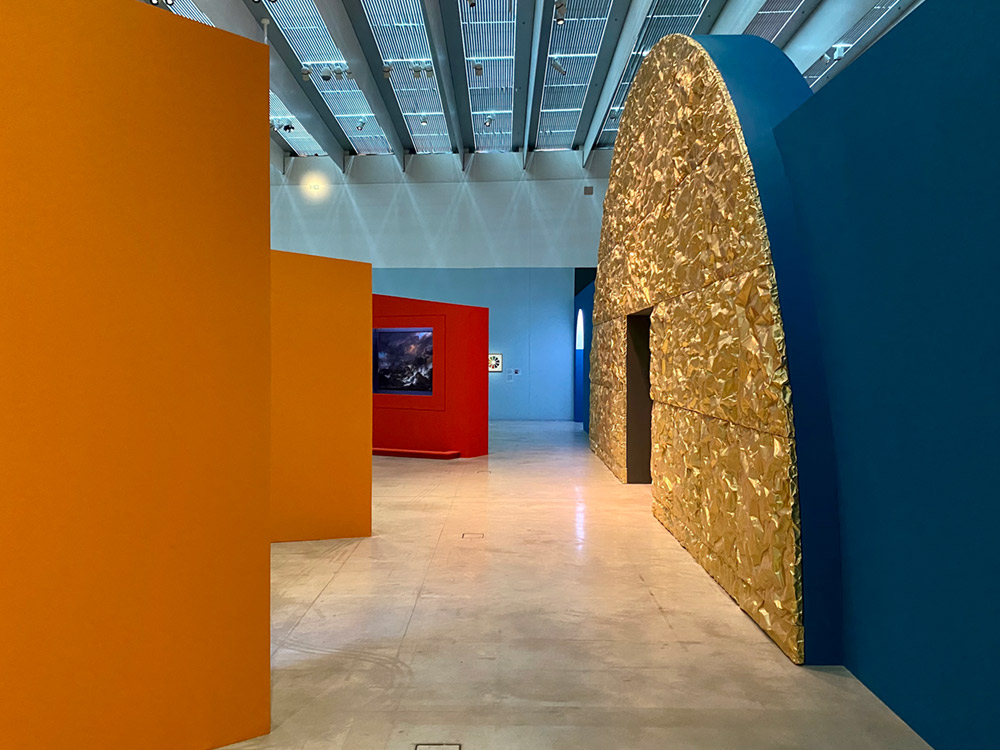
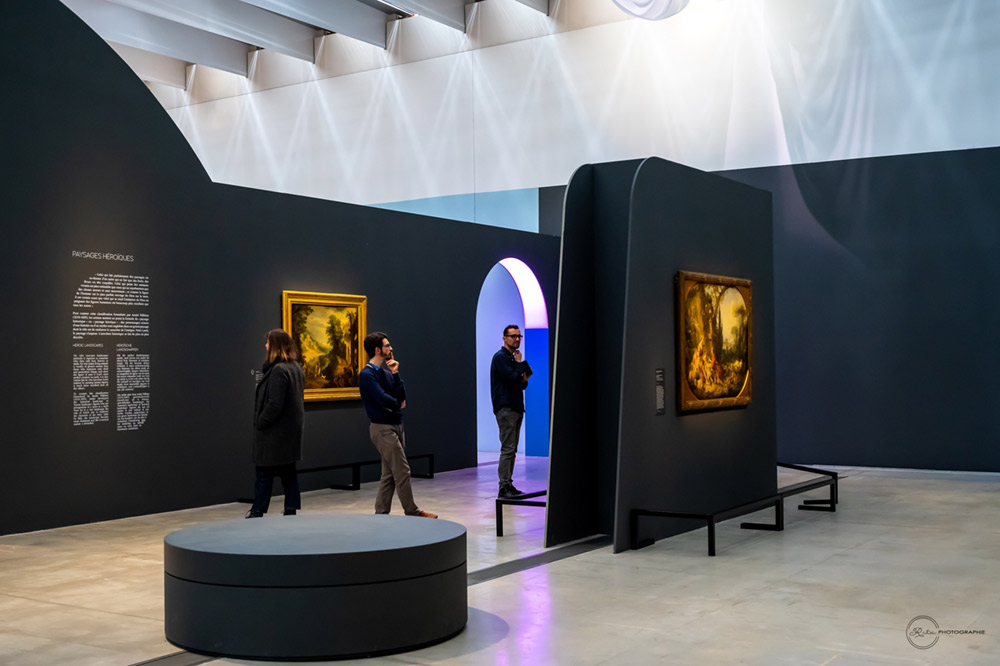
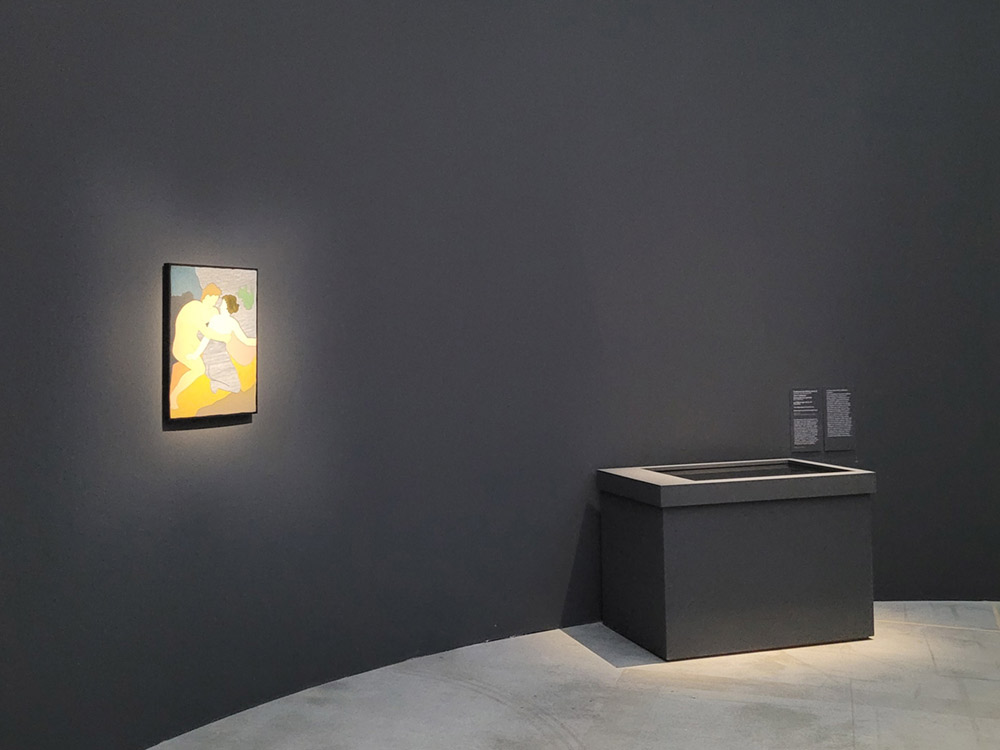
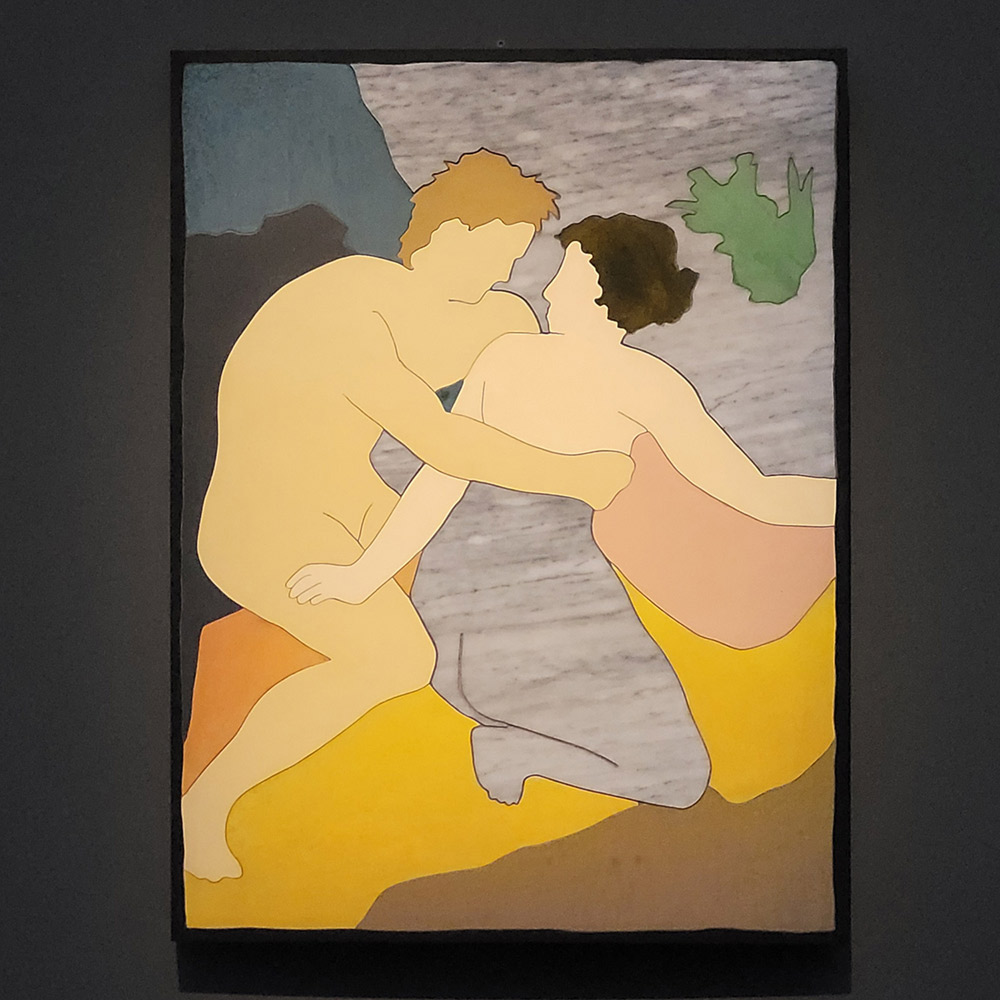
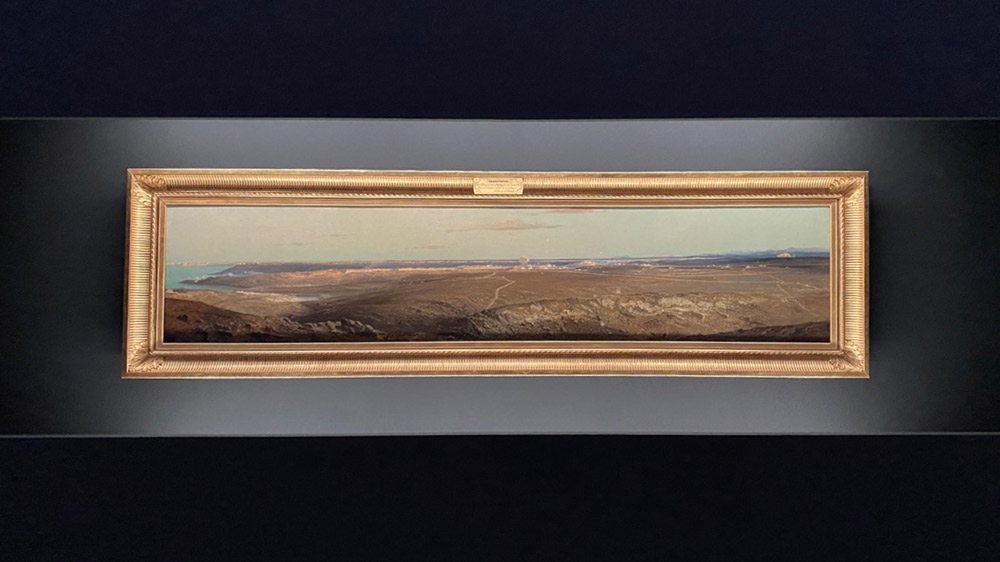
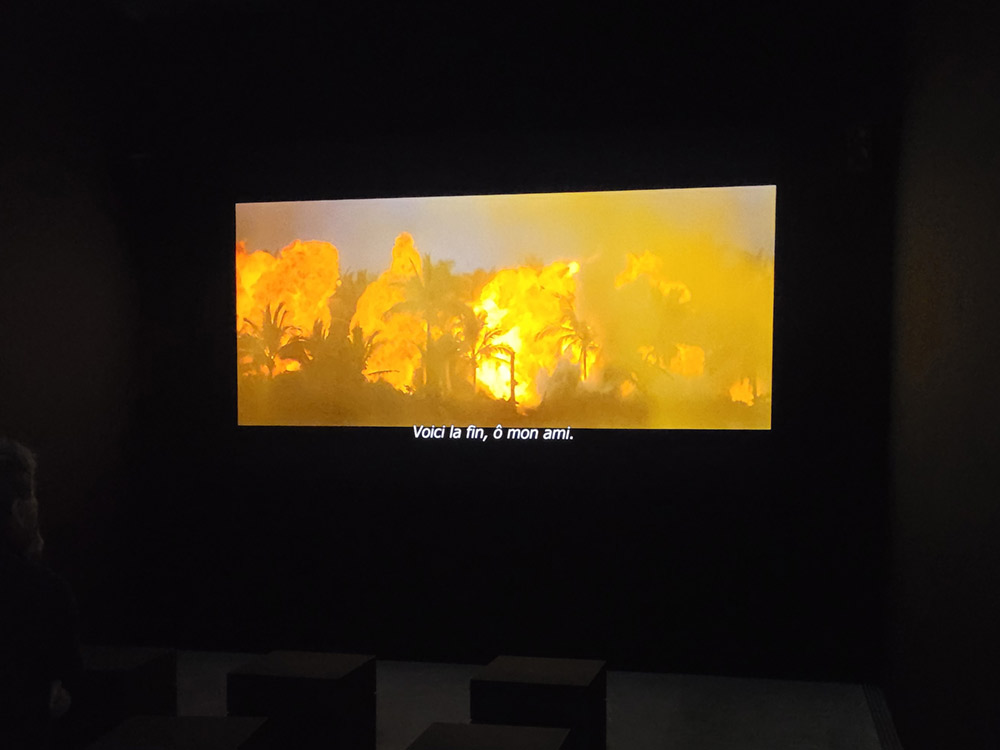
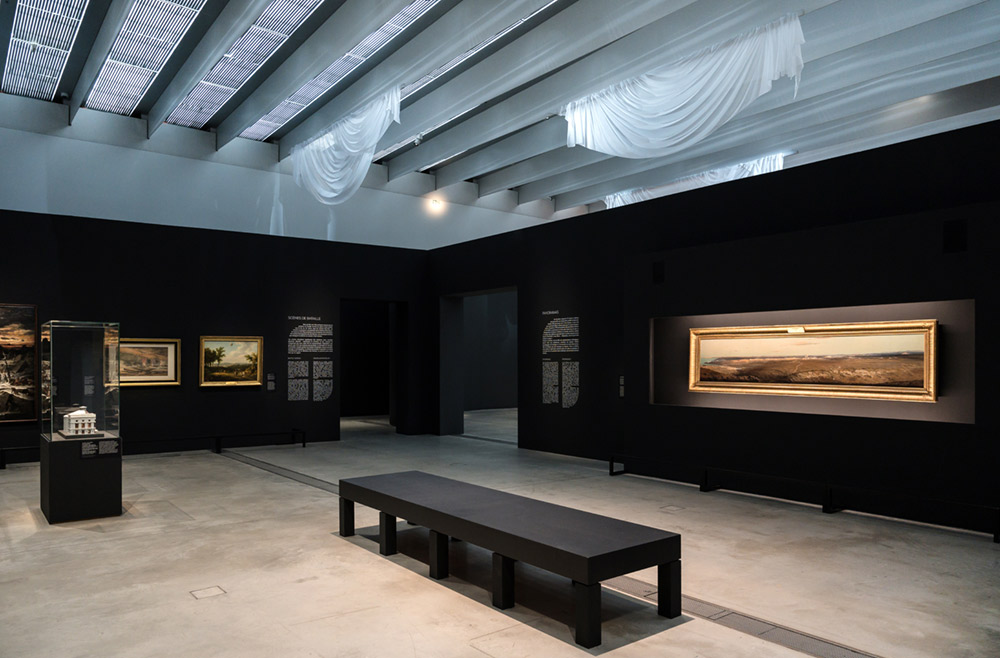
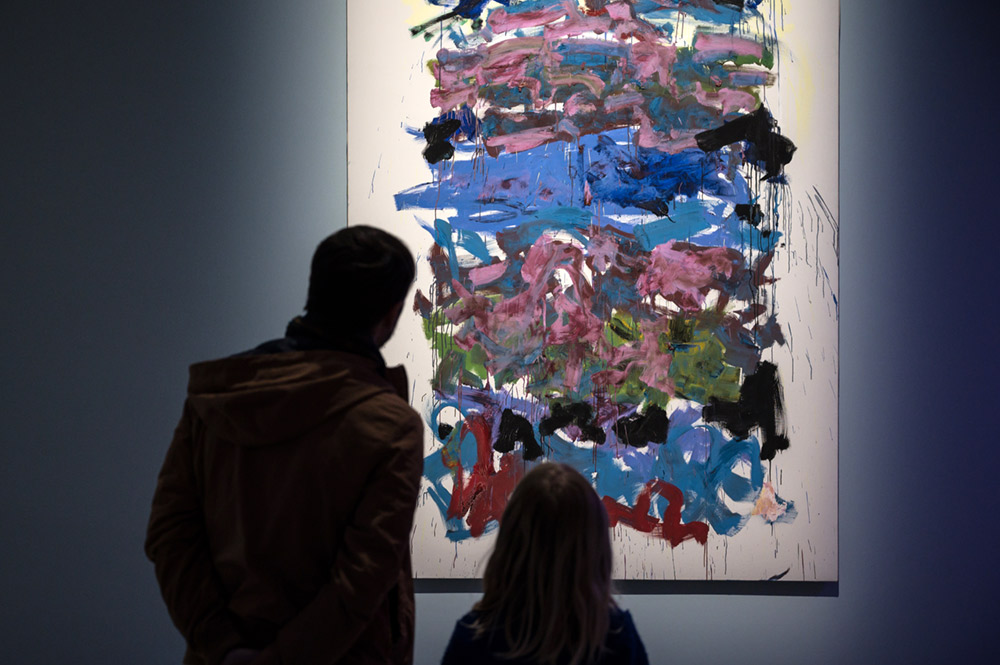
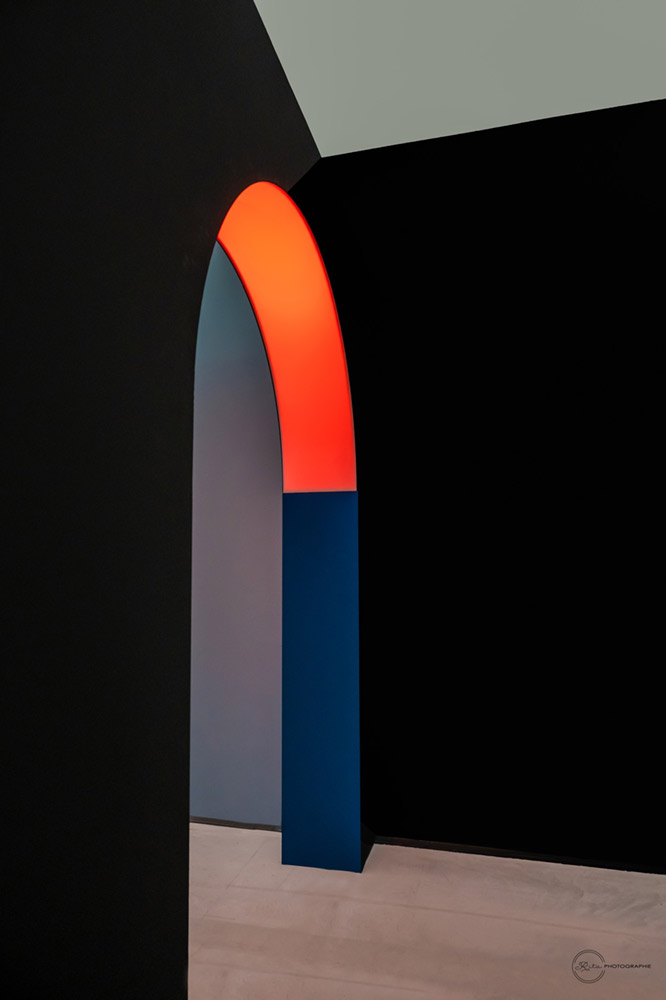
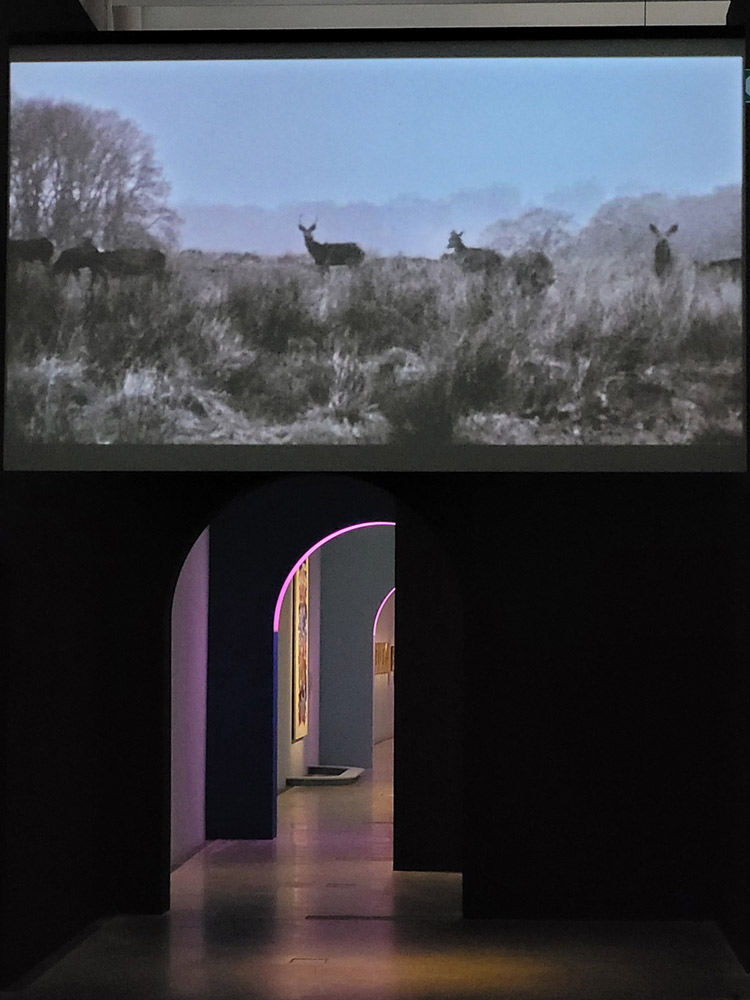
Image copyright: Laurent Pernot; Julien Davrou; Rita Photographie; Louvre-Lens / F. Iovino
Text “Between sky and earth” published in the exhibition catalog under the direction of Marie Lavandier, Director of the Louvre-Lens, Vincent Pomarède, Director of the Department of Paintings of the Louvre and Marie Gord, Curatorial Attaché at the Louvre-Lens, the three curators of the exhibition. Editions Liénart. Format 23×29 cm, 270 illustrations, 392 pages.
Exhibition realized with the support of the Mutuelles AXA
